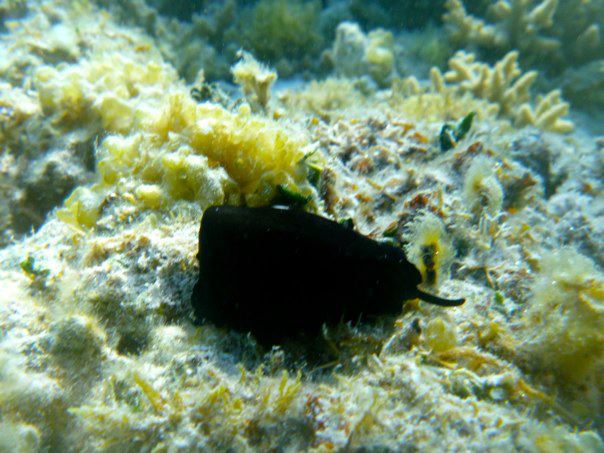Overview
Brief Summary
Physical Description
Size
Identification Resources
Ecology
Local Distribution and Habitats
Biogeographical Distribution
Micro-habitats and Associations
Crypsis
Life History & Behaviour
Behaviour
Cyclicity
Morphology and Physiology
External Morphology
Internal Anatomy
Conservation
Threats
References & More Information
Bibliographies
Names & Taxonomy
Common Names | Brief Summary

Scutus antipodes, commonly known as the elephant slug is a large, slug-like animal found in a range of marine habitats from rocky shores to coral reef crests. It is often found under rocks or in small crevices from low tide to 20 meters in depth. The elephant slug has a pitch black mantle covering most of its body while occasionally exposing its hard white shell underneath. It forsakes its day time refuge to feed on algae during the night time low tide. Although fairly abundant, its distribution is limited to the coastline of Australia.
As part of the fissurellidae family, the elephant slug is commonly referred to as slit, keyhole, or false-limpet. Fissurellidae is a family of gastropods, a class consisting of snails and slugs of all shapes and sizes. The elephant snail is unique from most true limpets in that the mantle slit is associated with the animals posterior end (back).
|
|